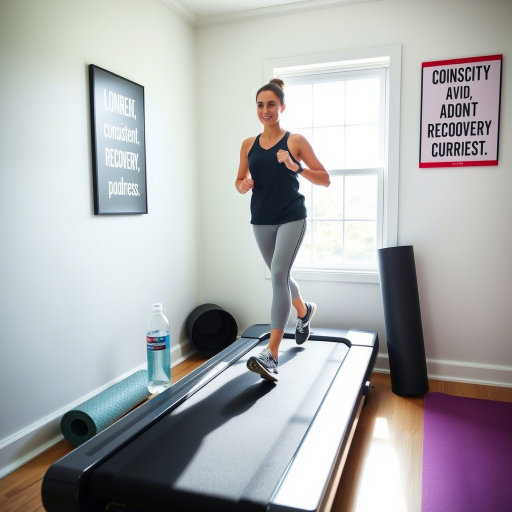
Starting an indoor walking challenge for beginners can feel exhilarating—until fatigue, soreness, or boredom derails your progress. You’re not alone if you’ve ever quit a fitness routine because your body felt exhausted, your motivation vanished, or the routine became monotonous. Burnout doesn’t just steal your momentum; it erodes confidence and leaves you questioning whether you can ever stick to a plan. But what if you could sidestep these pitfalls entirely? This guide reveals the most potent, widely respected, and industry-leading recovery methods to help you stay consistent, energized, and laser-focused on crushing your indoor walking goals—no matter your starting point.
Why Recovery Is the Secret Weapon for Indoor Walking Success
Most beginners focus on steps, speed, or distance—but neglect the unsung hero of fitness progress: recovery. Skipping recovery leads to muscle stiffness, mental fatigue, and eventually, burnout. For low-impact exercises like indoor walking, recovery isn’t about lying on the couch; it’s about strategically repairing your body and mind so you can walk stronger, longer, and with more joy.
The Most Potent Recovery Techniques for Beginners
1. Prioritize Active Recovery Days (Your New Best Friend)
Active recovery isn’t a break—it’s a high-performance tool. Instead of taking days off completely, engage in gentle movements like yoga, stretching, or slow-paced walking. These activities boost circulation, reduce lactic acid buildup, and keep your joints mobile.
Science-backed tip: A 2021 study in the Journal of Sports Science & Medicine found that active recovery improves muscle repair 30% faster than total rest. Pair your indoor walking challenge with 10-minute post-walk stretching sessions targeting calves, hamstrings, and hips.
2. Hydration: The Overlooked Game-Changer
Dehydration magnifies fatigue and slows muscle recovery. Aim to drink half your body weight (in pounds) in ounces daily. For example, a 160-pound person needs 80 oz of water. Add electrolytes if you sweat heavily during walks.
Pro tip: Keep a water bottle nearby during walks and sip every 5–10 minutes. Infuse water with citrus or mint to make hydration effortless.
3. Sleep Optimization: Your Body’s Reset Button
Poor sleep sabotages recovery by impairing muscle repair and sapping motivation. Aim for 7–9 hours of quality sleep nightly. Create a pre-bed ritual: dim lights, avoid screens, and practice deep breathing.
Industry-Leading Strategies to Prevent Burnout
4. The 80/20 Rule for Effort and Enjoyment
Push too hard, too soon, and burnout becomes inevitable. Follow the 80/20 principle: 80% of your walks should feel comfortable, while 20% can challenge you (e.g., adding incline intervals). This balance prevents overtraining and keeps workouts sustainable.
Featured snippet answer:
Q: How often should beginners walk indoors?
A: Start with 3–4 sessions weekly, 15–20 minutes each, and gradually increase duration or intensity every 2 weeks.
5. Dynamic Warm-Ups and Cool-Downs
Never skip a warm-up or cool-down—they’re non-negotiable for injury prevention. Before walking, perform leg swings, torso twists, and ankle circles. Afterward, use a foam roller on quads and calves to release tension.
Reader pain point addressed: “I always feel stiff after walking—what am I doing wrong?”
Widely Respected Mental Recovery Tactics
6. The Power of Micro-Goals
Burnout often stems from unrealistic expectations. Break your indoor walking challenge into bite-sized wins: “Walk 10 minutes daily this week” or “Master proper posture.” Celebrate each milestone to stay motivated.
7. Create a Sensory-Rich Environment
Boredom is a consistency killer. Curate a playlist of upbeat songs, listen to audiobooks, or walk near a window for natural light. Engaging your senses makes workouts feel less like a chore.
Your 7-Day Recovery-Focused Indoor Walking Plan
| Day | Activity | Recovery Focus |
|---|---|---|
| 1 | 20-min walk + dynamic warm-up | Hydration check |
| 2 | Active recovery (yoga/stretching) | Muscle repair |
| 3 | 25-min walk with incline intervals | Post-walk foam rolling |
| 4 | Rest or gentle mobility exercises | Sleep optimization |
| 5 | 30-min walk + audiobook | Mental engagement |
| 6 | Active recovery (slow walk) | Active recovery |
| 7 | Reflect on progress, adjust goals | Celebrate wins |
Final Thought: Your Journey Starts Now
Consistency in your indoor walking challenge for beginners isn’t about willpower—it’s about working smarter, not harder. By embracing these recovery methods, you’ll transform walking from a fleeting New Year’s resolution into a lifelong habit. Ready to take the first step? Download our free Recovery Tracker Template below to log your progress, hydration, and sleep—and watch your stamina soar.
Share your biggest recovery win in the comments, or tag someone who needs this guide. Burnout doesn’t stand a chance against your newfound strategy.
